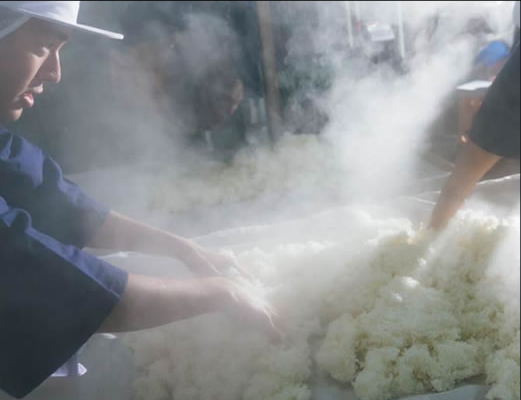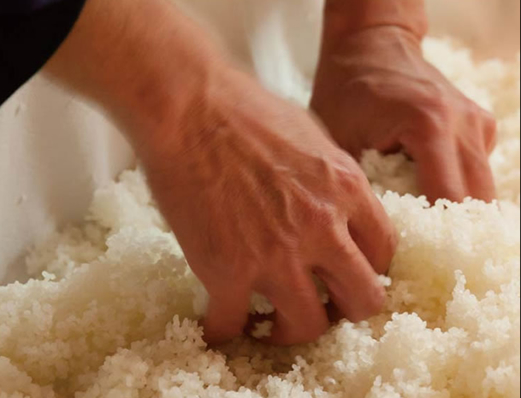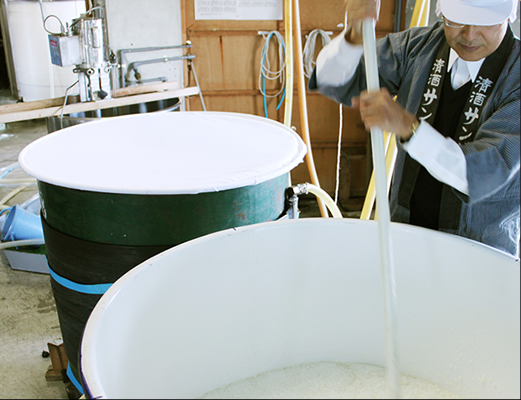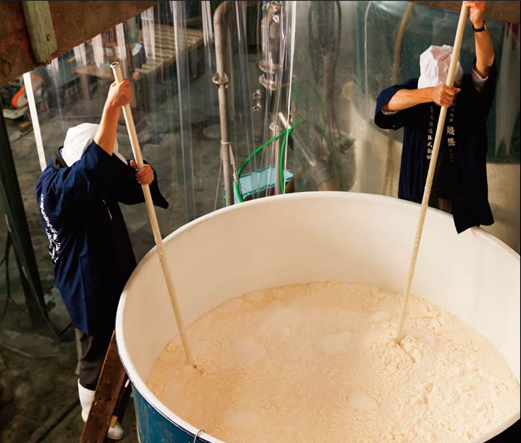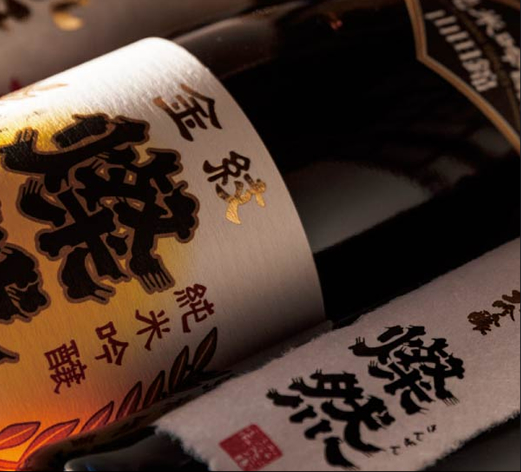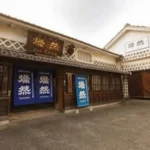and passion for excellent sake
produce brilliant sake.
This brewery, which produces the sake brands “Sanzen” and “Kiseki No Osake”,
stands at a corner of the traditional wholesale district in the Tamashima area of Kurashiki City in Okayama Prefecture.
Tamashima was one of many port towns for the large, wooden stone-hauling ships that departed from the Bitchu area.
Boasting excellent water quality from the Takahashi River valley and together with the superior rice strains of Omachi and Yamada Nishiki, “qualityoriented” is our motto in producing sake using traditional methods. The brewery owner and brewmaster To Kikuchi brews “Sanzen” with a commitment to quality and a passion for making the most excellent sake.



